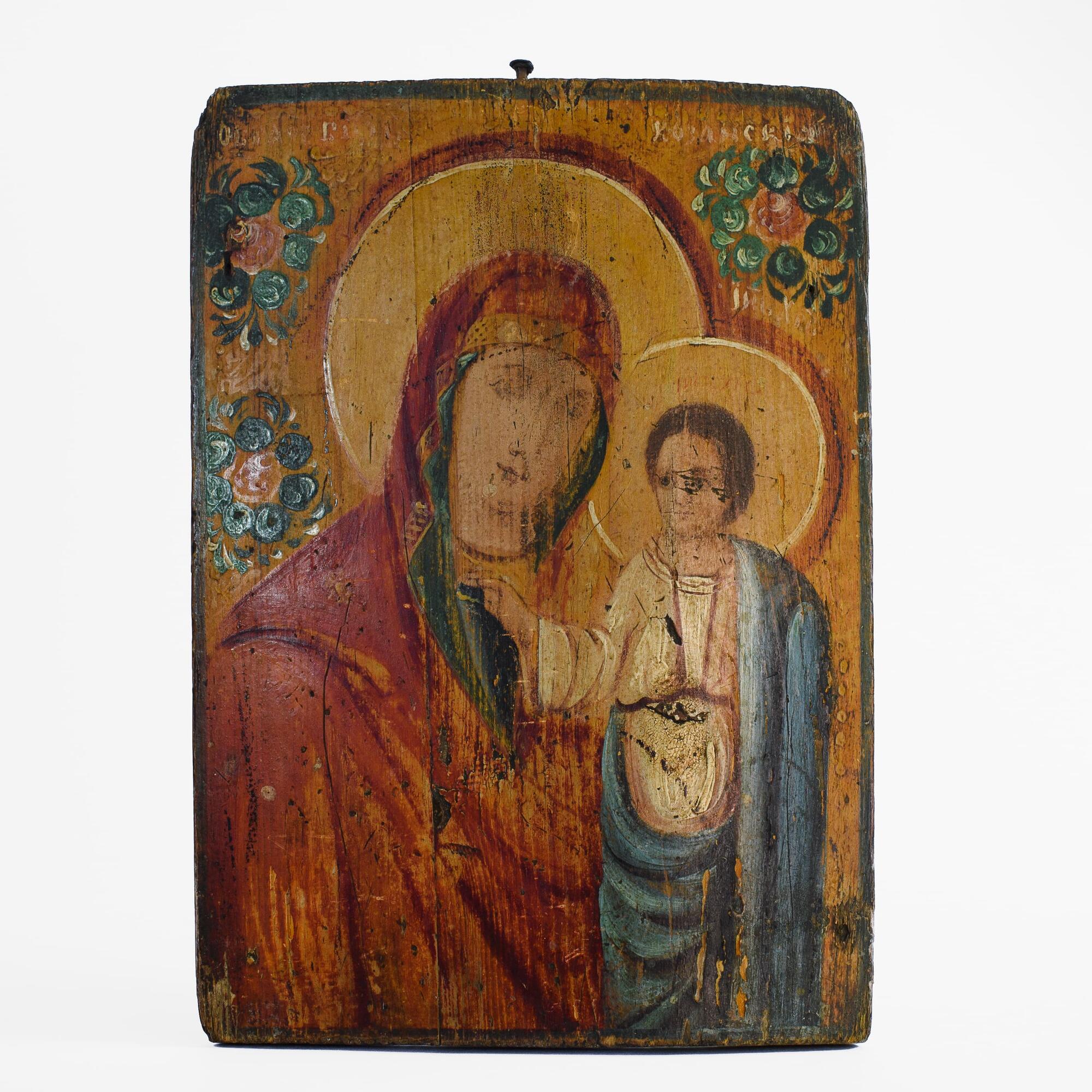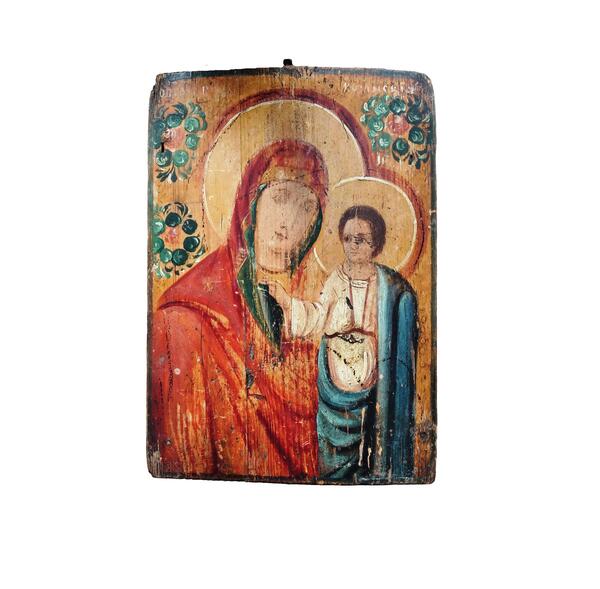The Kazan Icon of the Mother of God is one of the main Russian relics. It was found in Kazan during the reign of Ivan the Terrible.
According to legend, this icon of the Virgin miraculously appeared after a terrible fire in 1579: the Virgin Mary herself came in a dream to a girl, Matrona Onuchina, and pointed out to her where to look for the image buried in ashes. At first, the adults dismissed Matrona, but then they listened to the child and indeed found the icon where the Mother of God said it would be. Miracles immediately began to happen around it.
Later, the Kazan Convent of the Theotokos was established on the site of the icon’s appearance. Matrona who took the name Mavra became its first abbess.
In Russian history, many significant events are associated with this icon, and during the reign of the Romanov dynasty, its veneration was elevated to a cult.
There are over 20 different versions of the Kazan Mother of God. Three are considered the most significant: the icon that appeared in Kazan, and two Moscow and Saint Petersburg ones.
The Kazan Icon of the Mother of God is considered the patroness of the Russian land, it protects and defends the warriors, and grants victory to the soldiers. Young couples are blessed with this icon at their weddings; the image is placed above cribs to protect newborns from evil forces.
The Kazan Icon of the Most Holy Theotokos from the Museum Complex of Kuybyshev is painted in oil on a rectangular board. In the center is a half-length image of the Mother of God, she is lightly turned to the left. Her head is covered with a bright red maphorion (a veil with a hood) with a green lining. The Mother of God slightly tilts her head to the Divine Infant.
Jesus is depicted frontally. He is dressed in a white shirt called a chiton. The Baby’s right hand is raised in a blessing gesture, the left one is hidden by a blue cloak — a himation.
The image corresponds to the painting canon of the Kazan icon. Around the heads of the Mother of God and the baby are large round halos of a light ocherish color, framed along the edge by a thin white and wide red stripe.
The drawing of the figures was simplified by the icon painter; the techniques and style they used are reminiscent of household items painting. Judging by the artistic style, art historians assume that this is a Siberian icon.
The name of the image indicated at the top has been partially lost.
According to legend, this icon of the Virgin miraculously appeared after a terrible fire in 1579: the Virgin Mary herself came in a dream to a girl, Matrona Onuchina, and pointed out to her where to look for the image buried in ashes. At first, the adults dismissed Matrona, but then they listened to the child and indeed found the icon where the Mother of God said it would be. Miracles immediately began to happen around it.
Later, the Kazan Convent of the Theotokos was established on the site of the icon’s appearance. Matrona who took the name Mavra became its first abbess.
In Russian history, many significant events are associated with this icon, and during the reign of the Romanov dynasty, its veneration was elevated to a cult.
There are over 20 different versions of the Kazan Mother of God. Three are considered the most significant: the icon that appeared in Kazan, and two Moscow and Saint Petersburg ones.
The Kazan Icon of the Mother of God is considered the patroness of the Russian land, it protects and defends the warriors, and grants victory to the soldiers. Young couples are blessed with this icon at their weddings; the image is placed above cribs to protect newborns from evil forces.
The Kazan Icon of the Most Holy Theotokos from the Museum Complex of Kuybyshev is painted in oil on a rectangular board. In the center is a half-length image of the Mother of God, she is lightly turned to the left. Her head is covered with a bright red maphorion (a veil with a hood) with a green lining. The Mother of God slightly tilts her head to the Divine Infant.
Jesus is depicted frontally. He is dressed in a white shirt called a chiton. The Baby’s right hand is raised in a blessing gesture, the left one is hidden by a blue cloak — a himation.
The image corresponds to the painting canon of the Kazan icon. Around the heads of the Mother of God and the baby are large round halos of a light ocherish color, framed along the edge by a thin white and wide red stripe.
The drawing of the figures was simplified by the icon painter; the techniques and style they used are reminiscent of household items painting. Judging by the artistic style, art historians assume that this is a Siberian icon.
The name of the image indicated at the top has been partially lost.


